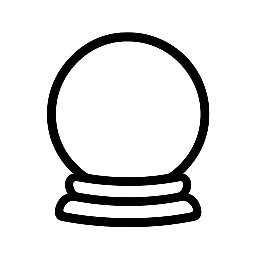In the digital age, the ancient practice of tarot reading has evolved to accommodate the vast and mysterious realms of the internet. Online tarot interpretation has become a popular means of seeking guidance, self-reflection, and entertainment. But what lies behind the virtual veil of online tarot readings? Is it a genuine attempt to tap into the subconscious, or merely a clever trick of the digital trade?
A Brief History of Tarot
Tarot cards have been used for centuries as a tool for divination, self-discovery, and spiritual exploration. The origins of tarot are shrouded in mystery, but it is believed to have originated in the 15th century in Italy. Over time, tarot has evolved and branched out into various forms, including French tarot, Rider-Waite tarot, and many others. Each deck has its unique symbolism, imagery, and interpretation, making tarot a rich and complex system.
The Art of Online Tarot Interpretation
Online tarot interpretation combines the traditional principles of tarot reading with the convenience and accessibility of the internet. Virtual tarot readings can be conducted through various platforms, including websites, mobile apps, and social media. The reader, often a skilled tarot practitioner, uses their knowledge of tarot symbolism, astrology, and psychology to interpret the cards and provide insights into the seeker’s life.
Types of Online Tarot Readings
There are several types of online tarot readings available, catering to different needs and preferences. Some popular types include:
- General readings: A broad overview of the seeker’s life, covering various aspects such as relationships, career, and personal growth.
- Question-specific readings: Focused on answering a specific question or addressing a particular issue.
- Love and relationships readings: Exploring romantic relationships, partnerships, and emotional connections.
- Career and finance readings: Examining professional paths, financial situations, and life purpose.
The Science Behind Online Tarot Interpretation
While tarot reading is often viewed as a subjective and intuitive practice, there are some scientific principles that underlie its mechanisms. Research in psychology and neuroscience has shown that tarot reading can be a powerful tool for:
- Self-reflection and introspection: Tarot readings can facilitate a deeper understanding of one’s thoughts, emotions, and behaviors.
- Cognitive biases and heuristics: Tarot readings can help individuals recognize and overcome cognitive biases, such as confirmation bias and the availability heuristic.
- Emotional regulation and well-being: Tarot readings can provide a safe space for emotional expression and exploration, promoting emotional regulation and well-being.
Benefits and Limitations of Online Tarot Interpretation
Online tarot interpretation offers several benefits, including convenience, accessibility, and anonymity. However, it also has its limitations, such as:
- Lack of personal connection: Online readings may lack the personal touch and empathy of in-person readings.
- Dependence on technology: Technical issues or poor internet connectivity can disrupt the reading experience.
- Quality and authenticity: The quality and authenticity of online tarot readings can vary greatly, depending on the reader’s expertise and intentions.
Conclusion
Online tarot interpretation is a complex and multifaceted phenomenon, blending the art of traditional tarot reading with the science of psychology and technology. While it offers many benefits and opportunities for self-discovery, it is essential to approach online tarot readings with a critical and nuanced perspective, recognizing both its potential and limitations. As we continue to navigate the vast expanse of the digital realm, the art and science of online tarot interpretation will likely evolve, adapting to the changing needs and desires of those seeking guidance and wisdom.


Leave a Reply